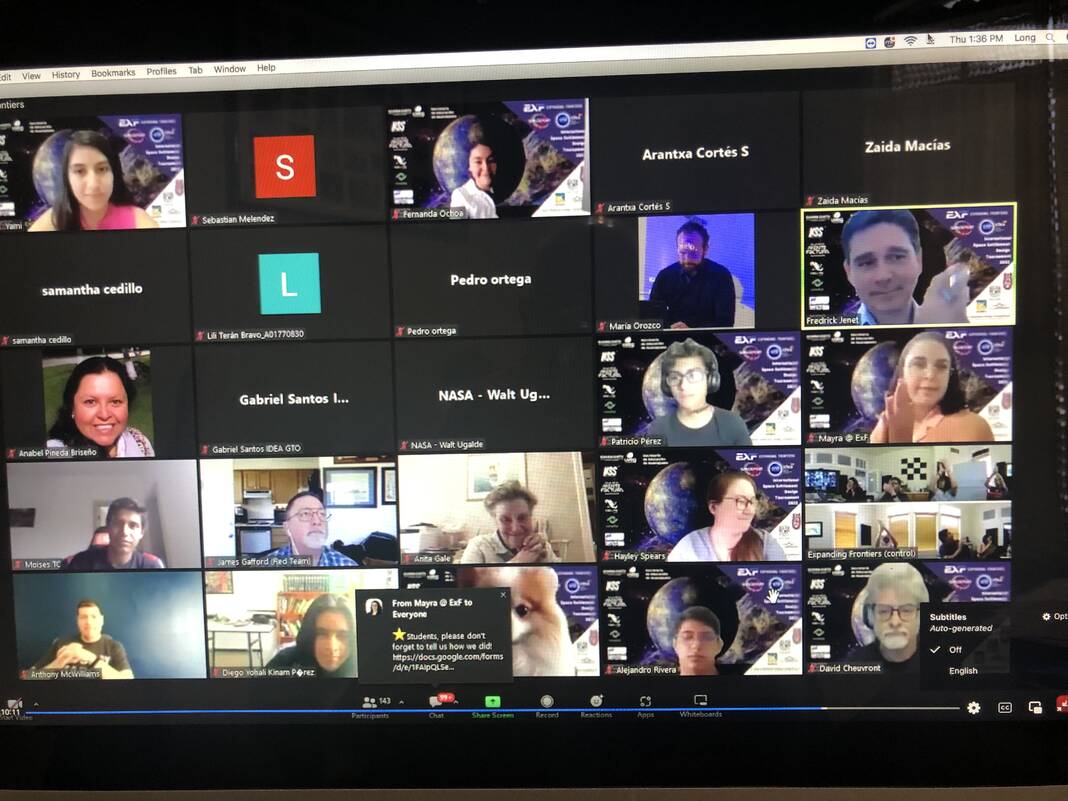|
Only have a minute? Listen instead
Getting your Trinity Audio player ready...
|

A team from Mexico with a Brownsville connection has won the 2022 International Space Settlement Design Tournament held virtually May 19-22 by Expanding Frontiers, a nonprofit whose mission is to further commercial space exploration and development.
The tournament is the only officially sanctioned event of its kind based on the wildly successful International Space Settlement Design Competition (ISSDC) from the National Space Society and Aerospace Education Competitions. ISSDCs are held around the world through regional partners in places like China, India, Australia, Africa, and the United Kingdom.
The recent tournament was organized by Expanding Frontiers and Spaceport Mexico, a Mexican initiative that was developed and spun off from Expanding Frontiers’ entrepreneur development programs.
“During these tournaments, the students begin to think about how humanity will take on the challenges of living and working in space. But, and perhaps the most important, they start to witness, first hand, what it takes for humanity to take on the challenges of working together,” said Fredrick Jenet, PhD, the founder and director of Expanding Frontiers.
The tournament took place over four days with participants grouped into four teams of as many as 50 members each. Each team was a mythical corporation that had to respond to a request for proposal to build a space settlement on Mercury, the planet closest to the sun, and whose low gravity, extreme temperatures, peculiar orbit, and nearly non-existent atmosphere provide students with unique challenges that push them to think beyond simple settlements,” Jenet wrote in a release summarizing the competition.
The winning team, Vulture Aviation, beat our competitors Dougledyne Astrosystems, Grumbo AeroSpace and Rockdonnel.
“The idea here is to simulate industry as closely as possible,” Jenet said. “Once they get the RFP, the lead person pulls in people from all around the company. They all now have to work together to respond to this proposal. It simulates what it’s like to be at Boeing or Lockheed Martin or any of the big-name companies.”
The Vulture Aviation team chose Moises Tejeida Caballero of Saint Josephs Academy as its president, Daniel Garcia as marketing director, Mayra Andrade as structures director. Evy Nava as engineering director and Angel Zanabria as director of human engineering, all from Guanajuato. Other team members were from Guanajuato or Mexico state.
Students spend the contest’s second day organizing themselves and their companies. Many have never met, do not speak a common language well enough to communicate, and have never participated in the tournament before. As if these challenges are not daunting enough, students will have to work together to design and present a pitch for a space settlement to industry professionals within 24 hours,” Jenet wrote.
“During Day 3, students receive a Request for Proposal and begin their work. Students only have a few hours to prepare initial presentations to present to preliminary reviewers that same day. Students must take many factors into consideration as they design their space settlement. They must outline how the settlement will look, how the habitants will find shelter, generate food and energy, and be able to provide logical rationale to industry experts for their decisions,” the summary states.
The final judges’ panel of physicists and engineers question the students about their designs and decisions on Day 4. Impressively, the students hold their own with the panel of judges and get through the nerve-wracking hour of proposal presentation and questions. Some students have the added challenge of presenting and communicating in their second language,” as was the case with the Vulture Aviation team.
During the opening session, the students heard welcoming remarks from partners in the state of Guanajuato, and a narration of the May 19 launch and orbital insertion of the Starliner, Boeing’s commercial, partially reusable spacecraft designed to transport astronauts to the International Space Station. During the livestream, students received exclusive commentary from Jack Gafford, an ISSDT judge and senior systems engineer at Boeing, who was directly involved in the Starliner’s development.



